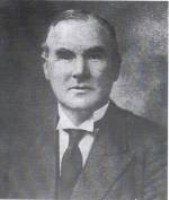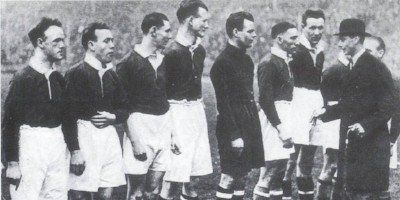


“It was Jackson who first brought home fully to British football the fact that with the change of the offside law more goals could be scored by outside men, but it was not alone by running into goal with the ball from the wing that Jackson did it,”
“He also took up the position in goal alongside his centre-forward for centres from the opposite wing, and it is this happy knack of being on the spot in this way for a chance centre that has made Jackson a menace in every match. ‘Jack in the box’ Jackson is a good description. He bobs up and scores so unexpectedly.”
“I want to emphasise that all our forwards are inherently clever,”
“But I wish to say that the English tactics were wrong. The Saxon wing-halves paid more attention to the wingers than the inside forwards – therefore the latter were given a lot of space. It is a common thing in England to let wing halves, and not fullbacks, mark the wingers. It doesn’t pay and I don’t know why they pursue it.”
